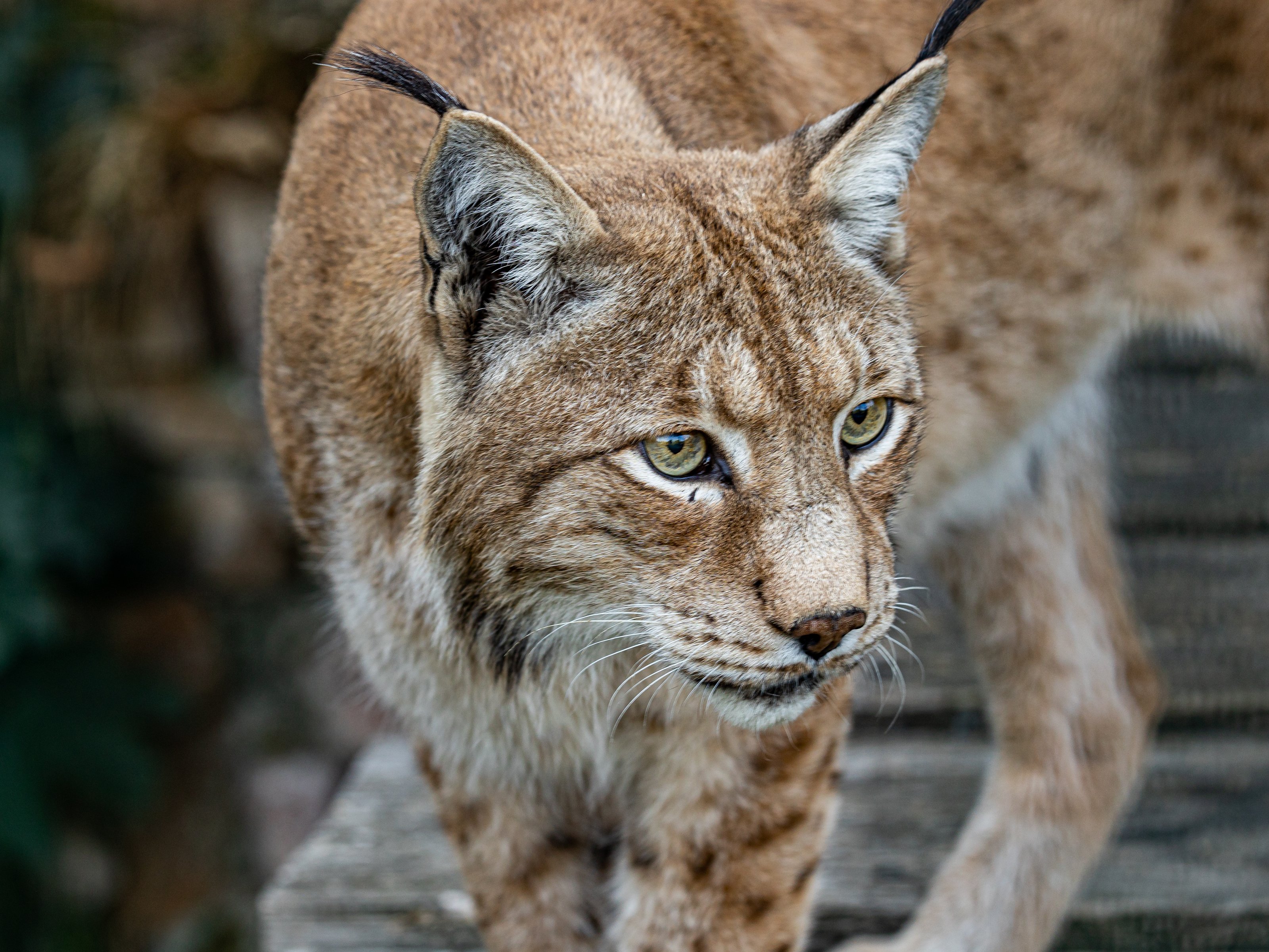
Station 7 Eurasischer Luchs
Hätten wir alle solche Ohren wie ein Luchs, würde hierzulande ein ganzer Industriezweig zugrunde gehen und die Innenstädte hätten etliche Läden weniger. Auf fünfzig Meter Entfernung noch eine Maus zu hören ist für den Luchs wichtig, auch wenn seine Lieblingsspeise Rehe sind. Ein ausgewachsener Luchs braucht ca. ein Kilogramm Fleisch am Tag. So kehrt er mehrere Tage lang immer wieder zu seinem Riss zurück, in der Hoffnung, dass sich nicht Fuchs und Wolf an seiner Beute bedient haben. Seine lichtempfindlichen Augen ermöglichen ihm die Jagd bei starker Dunkelheit. Dabei ist der Luchs kein Hetzjäger, sondern er pirscht sich an und überwältigt sein Opfer mit einem Überraschungsangriff. Typisch für einen Luchs sind auch die kleinen Fellpinsel auf den Ohren. In freier Wildbahn sind die scheuen Waldbewohner mit dem getupften Fell zwischen den Ästen und Blättern so gut wie nie zu sehen. Deshalb ist eine wissenschaftliche Populationserfassung nur mit Wildkameras und Genanalysen möglich.
Auch in Deutschland wird der scheue Jäger wieder heimisch, wo ihm mehr Sympathie entgegengebracht wird als dem Wolf.
Station 7 Rys
Kdybychom všichni měli uši jako rys, zaniklo by v této zemi celé odvětví průmyslu a ve městech by ubylo několik obchodů. Pro rysa je důležité slyšet myš na vzdálenost padesáti metrů, přestože jeho oblíbenou potravou je srnčí zvěř. Dospělý rys potřebuje denně asi jeden kilogram masa. A tak se ke své kořisti vrací znovu a znovu po několik dní a doufá, že si na jeho kořisti nepochutnaly lišky a vlci. Jeho oči citlivé na světlo mu umožňují lovit i v husté tmě. Rys není lovec, ale tiše sleduje svou oběť a přemůže ji překvapivým útokem. Pro rysa jsou typické také malé chomáčky srsti na uších. Ve volné přírodě jsou plaší lesní obyvatelé se skvrnitým kožíškem mezi větvemi a listím sotva k vidění. Z tohoto důvodu je vědecký průzkum populace možný pouze pomocí kamer a genetických analýz.
Plachý lovec se znovu zabydluje i v Německu, kde se setkává s většími sympatiemi než vlk.
Station 7 Lynx
If we all had ears like a lynx, a whole branch of industry would perish in this country and the city centres would have quite a few fewer stores. Hearing a mouse at a distance of fifty meters is important for the lynx, even if its favourite food is deer. An adult lynx needs about one kilogram of meat a day. Thus, he returns to his kill again and again for several days, hoping that the fox and the wolf have not helped themselves to his prey. Its light-sensitive eyes allow it to hunt in heavy darkness. The lynx is not a cursorial hunter, but stalks and overpowers its victim with a surprise attack. Typical for a lynx are also the small fur brushes on the ears. In the wild, the shy forest dwellers with the spotted fur are almost never seen among the branches and leaves. Therefore, a scientific population survey is only possible with wildlife cameras and genetic analysis.
Also in Germany, the shy hunter becomes native again, where more sympathy is brought to him than to the wolf.